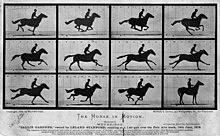
Back Wetenskaplike metode Afrikaans ሳይንሳዊ ዘዴ Amharic Metodo cientifico AN منهج علمي Arabic Métodu científicu AST Elmi metod Azerbaijani Siyentipikong paagi BCL Навуковы метад Byelorussian Навуковы мэтад BE-X-OLD Научен метод Bulgarian


The scientific method refers to ways to get facts, correct errors and mistakes, and test theories.
The Oxford English Dictionary says that scientific method is: "a method or procedure that has characterized natural science since the 17th century". It is observation, measurement, and experiment, plus the formulation, testing, and modification of hypotheses.[1]
A scientist gathers empirical and measurable evidence, and uses sound reasoning.[2]
New knowledge often needs adjusting, or fitting into, previous knowledge.[3]
- ↑ Oxford English Dictionary - entry for scientific.
- ↑ "Rules for the study of natural philosophy". Newton, Isaac 1687, 1713, 1726. Philosophiae Naturalis Principia Mathematica. 3rd ed, University of California Press. ISBN 0-520-08817-4 From I. Bernard Cohen and Anne Whitman's 1999 translation, pp. 794–6, from Book 3, The System of the World.
- ↑ Goldhaber, Alfred Scharff & Nieto, Michael Martin 2010. Photon and graviton mass limits. Rev. Mod. Phys. 82: 939-979. [1]
© MMXXIII Rich X Search. We shall prevail. All rights reserved. Rich X Search